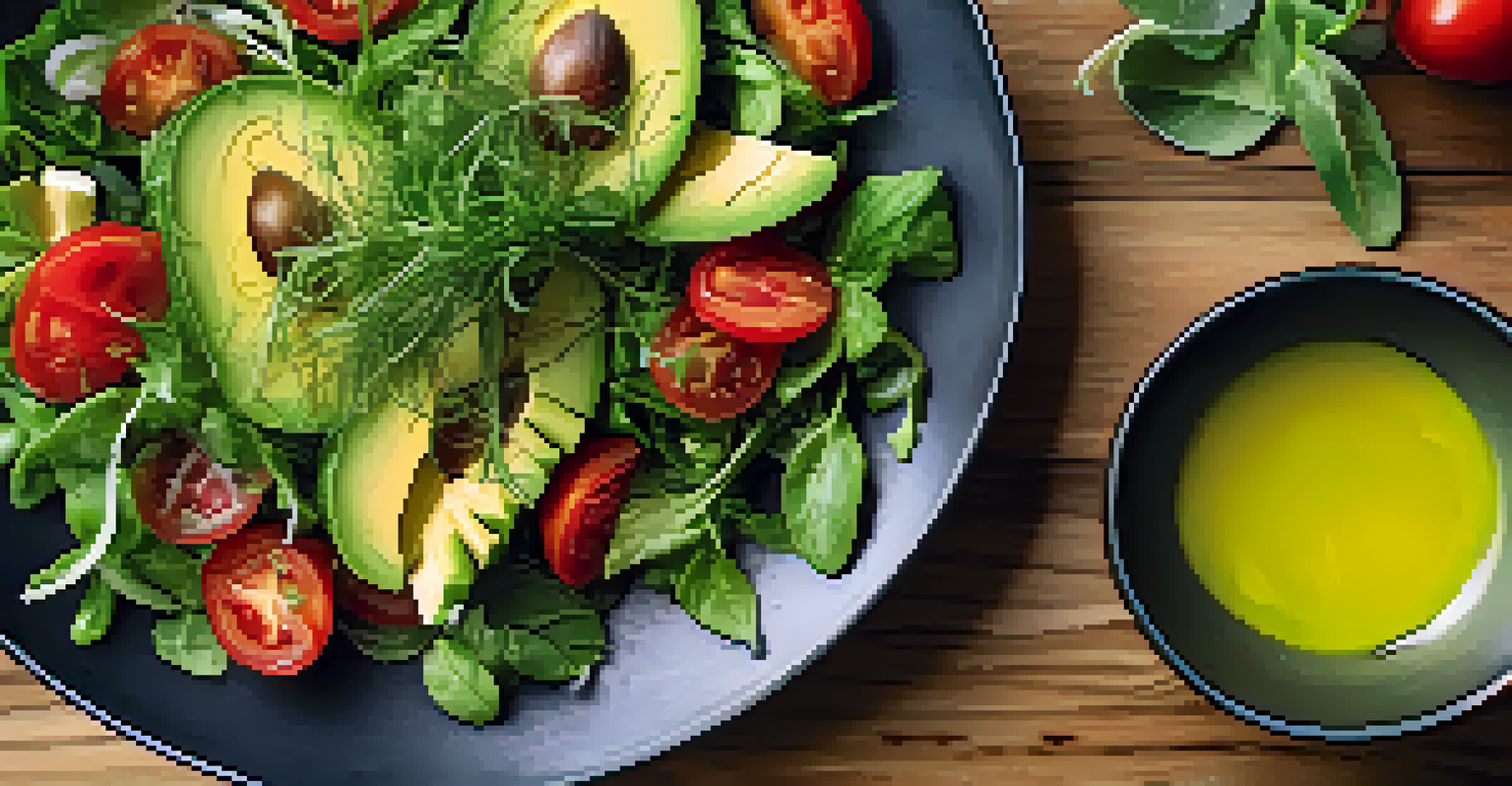Cooking with Cannabis: Tips for Beginners and Advanced Chefs

Understanding Cannabis: The Basics for Cooking
Before you dive into cooking with cannabis, it's crucial to understand what it is. Cannabis contains compounds called cannabinoids, with THC and CBD being the most well-known. THC is responsible for the psychoactive effects, while CBD is non-intoxicating and often used for its therapeutic benefits.
Cannabis is a plant that has the potential to change the world, and we’re just beginning to understand its possibilities in food and medicine.
Knowing the difference between these compounds can help you tailor your cooking to achieve the desired effects. For example, if you're looking for a relaxing evening, a recipe high in CBD might be the way to go. This foundational knowledge sets the stage for more advanced culinary adventures.
Additionally, it's essential to start with high-quality cannabis. Just like using fresh herbs, the quality of your cannabis will impact the flavor and effects of your dishes. Always source your cannabis from reputable suppliers to ensure a safe and enjoyable cooking experience.
Decarboxylation: Activating Cannabis for Cooking
Decarboxylation is a fancy term, but it simply means activating the cannabinoids in cannabis through heat. This process transforms THCA into THC, allowing it to produce its psychoactive effects when ingested. To decarb your cannabis, spread it on a baking sheet and heat it in the oven at 220°F for about 30-40 minutes.

This step is essential because raw cannabis won't provide the effects you're looking for in your dishes. Think of it like roasting garlic; the heat enhances the flavor and makes it more palatable. By decarboxylating your cannabis, you're ensuring that your culinary creations pack a punch.
Understand Cannabis Basics
Knowing the differences between THC and CBD helps you tailor your cooking for desired effects.
Once decarboxylated, you can infuse cannabis into oils or butters, which can then be used in various recipes. It's a versatile process that opens up a world of culinary possibilities, from salad dressings to baked goods.
Choosing the Right Cannabis Strain for Your Dish
When cooking with cannabis, the strain you choose can significantly affect the flavor and effects of your dish. Indica strains tend to be more relaxing, making them ideal for evening meals, while sativa strains are uplifting and perfect for daytime cooking. Hybrid strains offer a mix of both, catering to various culinary needs.
The plant is a natural remedy and can be used in so many ways, especially in cooking, to enhance flavor and experience.
Consider what you're aiming for with your dish. If you're cooking a comforting dinner, an indica strain may enhance the experience. On the other hand, if you're making a brunch dish, a sativa could add a delightful twist to your gathering.
Experimenting with different strains can lead to exciting discoveries in flavor and effect. Just remember to start with small amounts to gauge the potency, as each strain can vary in its cannabinoid content.
Infusing Oils and Butters: The Heart of Cannabis Cooking
Infusing oils and butters with cannabis is a staple in cannabis cooking. This process allows the cannabinoids to blend seamlessly into your culinary creations. Start by gently heating your chosen fat (olive oil, coconut oil, or butter) and adding your decarboxylated cannabis.
A low and slow approach is key to a successful infusion. Simmer the mixture on low heat for a few hours, stirring occasionally. This slow infusion process extracts the cannabinoids without burning the delicate compounds, much like making a great stock.
Decarboxylation is Key
Activating cannabis through decarboxylation is essential for unlocking its psychoactive properties in cooking.
Once infused, strain out the plant material and store your infused oil or butter in a cool, dark place. You'll be amazed at how versatile these infused ingredients can be, enhancing everything from pasta to pastries.
Cooking Techniques: Incorporating Cannabis into Dishes
When it comes to incorporating cannabis into your dishes, a little creativity goes a long way. You can use infused oils or butters in a variety of cooking techniques, from sautéing to baking. For instance, try adding infused olive oil to a salad dressing or using infused butter in your favorite cookie recipe.
Keep in mind that cannabis can have a strong flavor, so balance it with complementary ingredients. For example, pairing it with savory spices or sweet flavors can create a harmonious blend. Think of cannabis like a bold cheese; it can enhance a dish when used thoughtfully.
Always remember to start with small quantities, especially if you're new to cannabis cooking. It's better to underdose and gradually increase than to overpower your dish or guests with an unexpected punch.
Dosage: Finding the Right Amount for Your Recipe
Finding the right dosage of cannabis for your recipe can be tricky, especially for beginners. A common rule of thumb is to start with 5-10 milligrams of THC per serving, adjusting according to your experience and preferences. Since everyone's tolerance is different, this conservative approach allows for a more enjoyable experience.
Using the potency of your infused oils or butters can help determine how much to use in a recipe. For example, if your infused oil contains 10 mg of THC per tablespoon, you can calculate how much to add based on your desired dosage. It’s much like measuring spices; precision is key to achieving the right flavor and effect.
Choose Strains Wisely
Selecting the right cannabis strain can enhance the flavor and effects of your culinary creations.
Don't forget to label your infused creations clearly, especially if you plan to share them. This ensures that everyone knows what they are consuming, promoting a safe and enjoyable experience.
Safety and Storage: Keeping Your Cannabis Creations Fresh
Storing your cannabis-infused products safely is essential for maintaining their potency and flavor. Keep them in airtight containers, away from light and heat, to prolong their shelf life. This is similar to how you would store fine wine; proper care ensures the best experience each time you indulge.
Labeling your infused oils, butters, and dishes is also crucial. This not only helps with dosage but also allows you to keep track of how long they’ve been stored. Cannabis-infused items can degrade over time, so knowing their age helps you enjoy them at their best.

Lastly, be mindful of where you store these items, especially if you have children or pets around. Keeping them in a secure location is a responsible practice that ensures everyone stays safe while you explore the exciting world of cannabis cooking.